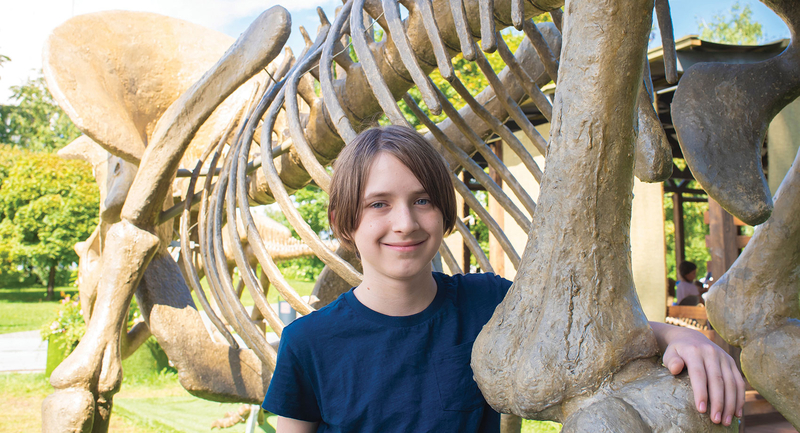The halls of Rowell Elementary School in California's Fresno Unified School District are covered with students' writing and other artifacts of the writing process. Outside the 4th grade classrooms, for example, the walls showcase students' recent reports on wildfires, as well as hand-drawn posters that students created in small groups to illustrate various facts about the spread of such fires. Also displayed are articles that the students read about wildfires during an "expert group jigsaw" activity, along with graphic organizers they used to capture notes from their text-focused discussions.
The school's focus on writing is even more evident inside Rowell's classrooms. Student writing samples in a variety of genres are posted on classroom walls at eye level so that students can easily read each other's writing. The classrooms are abuzz with students discussing their written work: reading their writing aloud to peers, asking for ideas, and providing feedback to each other using short checklists of success criteria. The students move about their classrooms to confer with each other and to view large, class-created charts on writing. Some charts show how different genres—such as scientific explanations, stories, or literary responses—are organized. Others show examples of "powerful paragraphs," "strong sentences," and "rich vocabulary" (such as resolve, investigate, and magnificent) from the model texts the students have been reading.
The classrooms at Rowell were not always like this. Just a short time ago, writing was not a priority at the school, and writing activities were often formulaic, worksheet-based, and disconnected from what students were learning in other subjects. Things started to change several years ago when the Fresno district set out to transform teaching and learning for its culturally and linguistically diverse student body, including more than 15,000 English language learners. Writing was central to the district's transformation plan.
For assistance on this journey, the district partnered with WestEd's Leading with Learning project, which provides professional learning services to schools and districts with high language-minority populations. Leading with Learning, which authors Pam and Kim developed with a team of their colleagues at WestEd, supported Rowell and other trailblazing schools in revamping their approach to teaching writing, with an emphasis on three key ideas derived from more than a decade of Leading with Learning's work with and research in schools: Writing should be authentic, relevant, and purposeful; writing should be abundant—integrated throughout all content areas and throughout the day; and writing instruction should include explicit attention to how language works in different genres. Through professional learning cofacilitated by WestEd and district staff, Rowell teachers developed a deeper and more nuanced understanding of writing as a powerful tool for learning and communication. This meant shifting writing from the periphery to the center of teaching and learning—and seeing writing as a way to empower students to understand the world, express themselves effectively, learn from one another, and argue for the things they believe in.
Putting this kind of emphasis on writing requires, among other things, intentional and relevant curriculum and instruction that helps students unpack the complex language of the texts we want them to read and create. To this end, the change process at Rowell focused on two key aspects of instruction:
- Teachers need to demystify how language works in different genres so that students have the tools to communicate their ideas across the content areas, in a variety of genres, and to a range of audiences.
- Writing needs to be authentic and relevant to students' lives, to what they are learning, and to the world around them so they can connect more deeply with content through writing and see how their writing can make an impact on the world.
Explorations in Language
"The difference between the right word and the almost right word is the difference between lightning and a lightning bug."—Mark Twain
Many teachers have had the experience of engaging their students in rich content learning—a hands-on experiment, an interactive reading activity, or an exciting field trip, for example—and then assigning a writing task, only to be disappointed by the results. Often, the disappointment is less about the content of the writing than about how the text was organized or how language was used (or not used). Without proper support, students may struggle to express themselves in keeping with the style and conventions of different genres. For instance, science reports may be more conversational than scientific in tone, arguments may have unclear or uncorrelated claims, stories may lack a narrative arc, and historical accounts may lack cohesion.
To address these sorts of issues and scaffold students' writing, teachers must go beyond the common language arts strategies of providing generic paragraph frames and routine grammar and vocabulary instruction. They must also demystify how the language in different written genres works. Broadly speaking, "genres" are recognized and expected ways of structuring texts and using language to express ideas and communicate effectively with others. By taking the time to highlight and work with students to analyze the specific organizational and language features of different genres, teachers can help students develop the ability to better interpret complex texts and produce clearer and more nuanced writing.
Language exploration is most effective when it is fun, creative, and leads to curiosity about how texts and the language in them work. At Rowell, students in the upper grades analyze the language of different genres through class discussions and group work. When looking at an informational report, an argument, a story, or any number of other written genres, students are asked to explore the social purposes of different genres (such as to inform, explain, persuade, or entertain), how authors organize and structure their texts, and the specific language resources authors use to create meaning and affect readers.
With the teacher's guidance, the students might explore how authors connect sections of text so the ideas flow together logically; how authors expand and enrich their ideas; or how different language resources may be more effective in one genre than in another, such as the use of dialogue or figurative language in literary texts or the use of modal verbs (for example, should, would, and could) in persuasive texts. This type of analysis of language makes writing less mysterious for students, gives them valuable models for their own writing, and helps them become more conscious of how they are using language in their writing.
In a unit on "Human Impact on Ecosystems," for example, 5th graders at Rowell analyze informational texts about threats to local owl populations. They first read about and discuss some core conceptual understandings. Then they become "language sleuths." To examine text structure and organization, they play a "text jumble" game with one of the articles, an explanatory text they've already read titled "Human Impacts on Owls in the United States." In this activity, the students work together in groups of three to reassemble the jumbled sections of the text, which are based on the typical stages of explanatory genres: a section identifying and describing the issue, a section explaining human impact on individual owls, a section explaining human impact on owl populations, a section about actions people have taken to protect owls, and a conclusion summarizing and reinforcing the points made.
Once a group comes to a consensus on the organization of the information (that is, how the stages are sequenced), they glue the sections in order on chart paper. Then they write notes in the margins about the big ideas in each stage and why they think the author included the information there. After exploring the organization of stages in the text and the key meanings within them, they dig deeper into the language features within each stage. They identify cohesive language, or language that helps texts "hang together" (such as therefore, as a result, or instead), use of pronouns (such as they or it), and summarizing nouns (such as "this event" or "these actions"). They also identify the scientific terms the author used, such as raptor rehabilitation, significantly reduced populations, and bioaccumulation. This activity involves a lot of talking about language and about the meanings that language conveys. After the small groups complete their analyses, the whole class has a discussion to compare findings.
Exploring language in this game-like way gives students an opportunity to build—simultaneously—their awareness of how effective writing works, their ability to make meaning with complex texts, and their verbal discussion skills. It helps students understand that effective writing is not about following a set of rules. Rather, it involves making informed, intentional choices from a range of possibilities, based on your purpose for communicating, the content area, the topic at hand, and the intended audience. While not all texts follow predictable genre guidelines, teaching students about the key features of different genres—how they are typically organized, and the language features frequently used in them—helps them build an awareness about how writing works in different genres. This demystifies language, placing students in a more informed, language-aware position when it comes to their own writing.
Authentic Writing
"If there's a book you really want to read, but it hasn't been written yet, then you must write it."—Toni Morrison
What students write about has to matter to them. Students are more excited to write when they connect personally to writing topics, when they are writing for an authentic audience, and when they feel that their writing can have an impact on real-world issues they care about.
Science is a subject that lends itself well to engaging and authentic opportunities for writing. While often relegated to its own period during the day, science can instead be integrated with language arts and language-development blocks to serve as a pathway to authentic, language-rich activities and writing. One example is the "Human Impact on Ecosystems" unit for 5th graders at Rowell, which integrates inquiry- and place-based science, language arts, and English language development. Throughout the unit, the students accomplish all sorts of different writing tasks, and they write every day. They investigate the owl's role in the food chain (which includes the very popular owl-pellet dissection task), how owls maintain rodent populations at stable levels, and how local owl populations are threatened by human actions. Each of these activities involves writing, such as note-taking while engaging in a science inquiry task, "quick writes" before or after discussing a complex topic, summaries of texts or videos, and reflections on learning.
Getting students personally invested in a topic is a great way to make writing assignments more meaningful, engaging, and authentic. To that end, the "Human Impact on Ecosystems" unit involves two main culminating writing tasks—both undertaken in a supportive, collaborative classroom environment that draws on the students' learning and interests. One is an explanatory text about threats to owl populations. The other is an argument text, which takes the form of a letter to the editor in which the student shares what he or she learned about owls and argues for specific actions the public should take to protect owl populations. Writing for an authentic and meaningful purpose—in this case, saving owls and protecting ecosystems—gives students a sense of agency and helps them to see that their writing can make a positive impact on the world.
A Culture of Shared Practice
"Now is the time to be precise about the meanings of words."—Chimamanda Ngozi Adichie
Rowell did not get to where it is overnight, and the school's journey is not over. But the writing-centered approach we've described is now supported by a sense of shared responsibility for students among teachers, coaches, and leadership. This collective responsibility is fueled by a deep commitment to access and equity for the children and youth in the district. The teachers did not simply add more writing to the school day—they became more intentional and focused in their writing instruction and, as a result, they fundamentally changed the way learning and writing happens in their classrooms.
Making students written work visible has been a key part of this process, both because it validates students and because it provides a professional learning resource for teachers. From the start, Rowell's principal, Alice McClintock, laid out clear expectations that writing should be abundant, visible, and connected to text discussions and deep learning. At a staff meeting early in the process, she asked each grade-level team to post displays of student work in their science or social studies units, including samples of student writing from the beginning of the unit through the end, in the halls of the school. But McClintock did not just tell her staff what to do, she showed them by creating a model display in the staff room; providing time for the grade-level teams to collaborate, plan, and reflect; and giving teams flexibility in conceptualizing their displays.
As one of the district-level instructional coaches supporting the school, author Thea guided McClintock and the grade-level teams in becoming more adept at teaching writing to English learners and other culturally diverse students. This included extensive coaching in classrooms, facilitated lesson- and unit-planning sessions, and guided analyses of student writing. McClintock also facilitated "gallery walks" with her staff, in which teams of teachers visited empty classrooms and hallways after school to discuss the writing they saw displayed. Setting these schoolwide expectations and establishing a culture of shared practice were critical in creating new writing and learning opportunities for students.
The teachers and leaders at Rowell, in partnership with district leadership, committed to shifting their practice so that all students could fulfill their potential as critical readers and powerful writers. The teachers at Rowell and other partnering schools tell us they feel more confident in and excited about teaching writing and that they see their focus on writing reflected in student work. According to district data, the students at these schools have made marked gains in language arts achievement.
When we see students as intelligent, creative, thoughtful, and insightful creators of ideas, we communicate that we value and genuinely need their unique, individual voices. By supporting students' writing development, we can empower them to make their learning and thinking visible and to use writing to persuade, inform, and engage their audiences in authentic ways. All of these abilities will prepare students for middle school, high school, and beyond.








